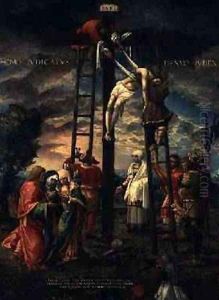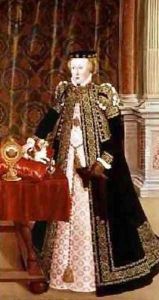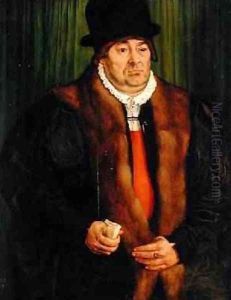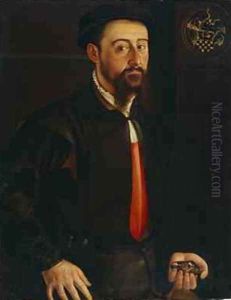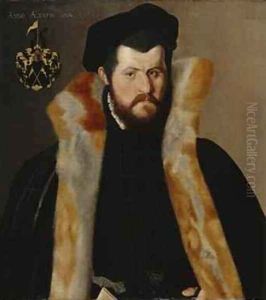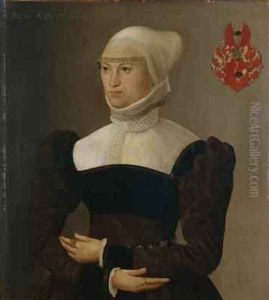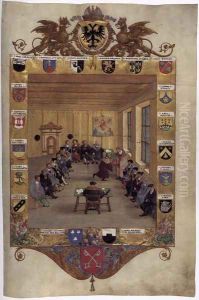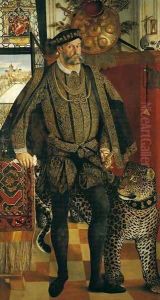Hans Muelich or Mielich Paintings
Hans Muelich or Mielich, also known as Johann Mielich or Müelich, was a notable German painter and woodcut artist of the Renaissance period, born in 1516 in Munich, which was then part of the Holy Roman Empire. His artistic career was primarily centered in his hometown, where he became one of the leading artists of his time.
Muelich was trained under the guidance of the Munich court painter, Barthel Beham, who himself was a pupil of Albrecht Dürer. This connection provided Muelich with a strong foundation in the techniques and styles of the Northern Renaissance, which is evident in his detailed and meticulous approach to his works. Muelich's style is characterized by precise detailing, vibrant coloration, and an emphasis on clarity and order, typical of the Northern Renaissance tradition.
Throughout his career, Muelich worked for several patrons, including the dukes of Bavaria. He was primarily known for his portraiture, where he captured the likeness and status of his subjects with great skill. His portraits are noted for their realism and the intricate details of the sitters' attire, which reflect the fashions and aesthetics of the 16th century German nobility. In addition to portraits, Muelich also produced religious works, book illustrations, and heraldic designs.
One of his most significant contributions was his work for Duke Albrecht V of Bavaria, for whom he created illuminations in the Ducal Prayer Book (Gebetbuch Herzog Albrechts V.) in the 1550s. These illuminations exhibit his finesse in handling miniature compositions and his ability to blend intricate detail with a rich palette. Muelich's work on the prayer book is considered one of the high points of German Renaissance illumination.
Muelich's influence extended beyond his paintings and illuminations. As a woodcut artist, he contributed to the spread of Renaissance art and ideas through his prints, which were distributed more widely than his painted works. His woodcuts show a robust linear quality and are often concerned with religious themes.
Hans Muelich's legacy as a painter and printmaker of the German Renaissance is significant, as he represents the transition from the late Gothic to the Renaissance style in southern Germany. His work reflects the intellectual and artistic currents of his time, and his portraits provide a window into the society and culture of 16th-century Bavaria. Muelich passed away in 1573 in Munich, leaving behind a body of work that continues to be appreciated for its craftsmanship and historical importance.
